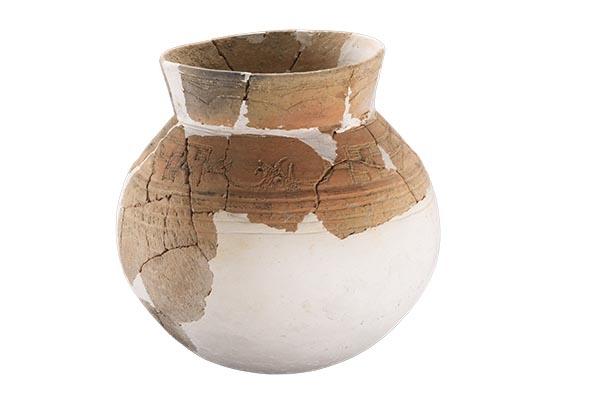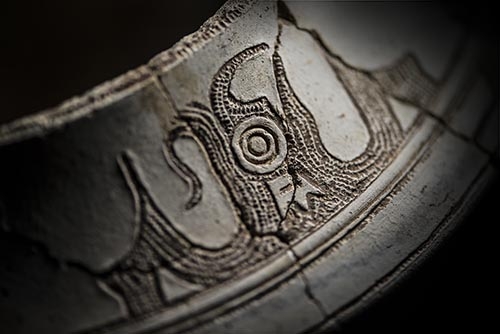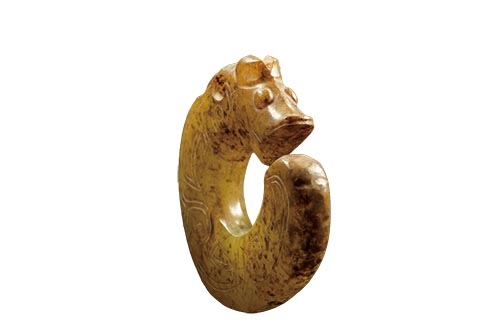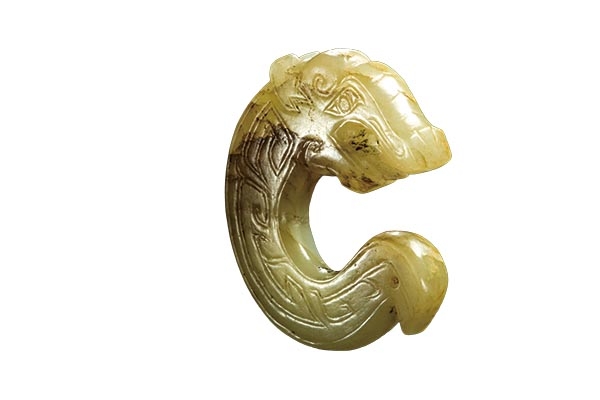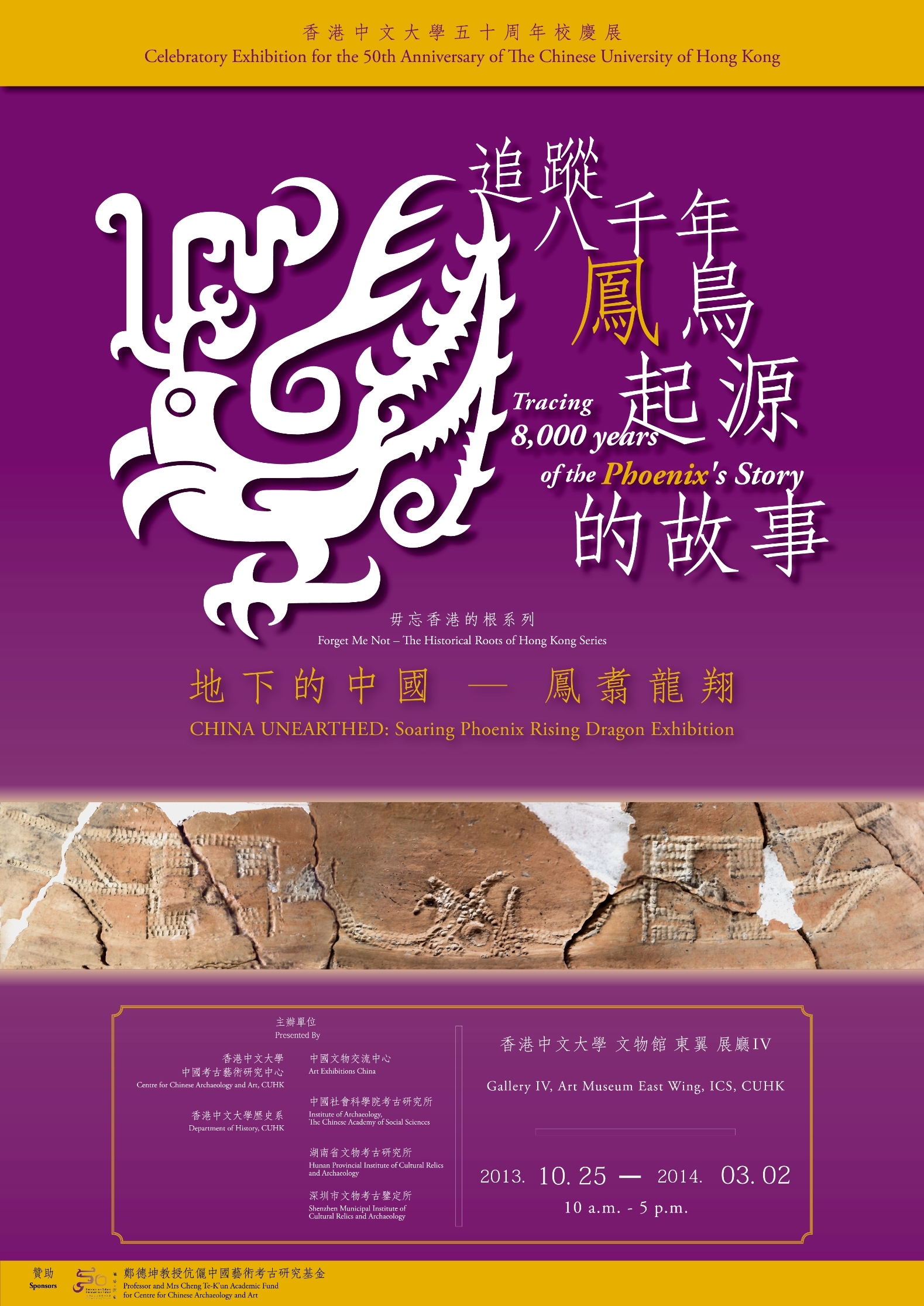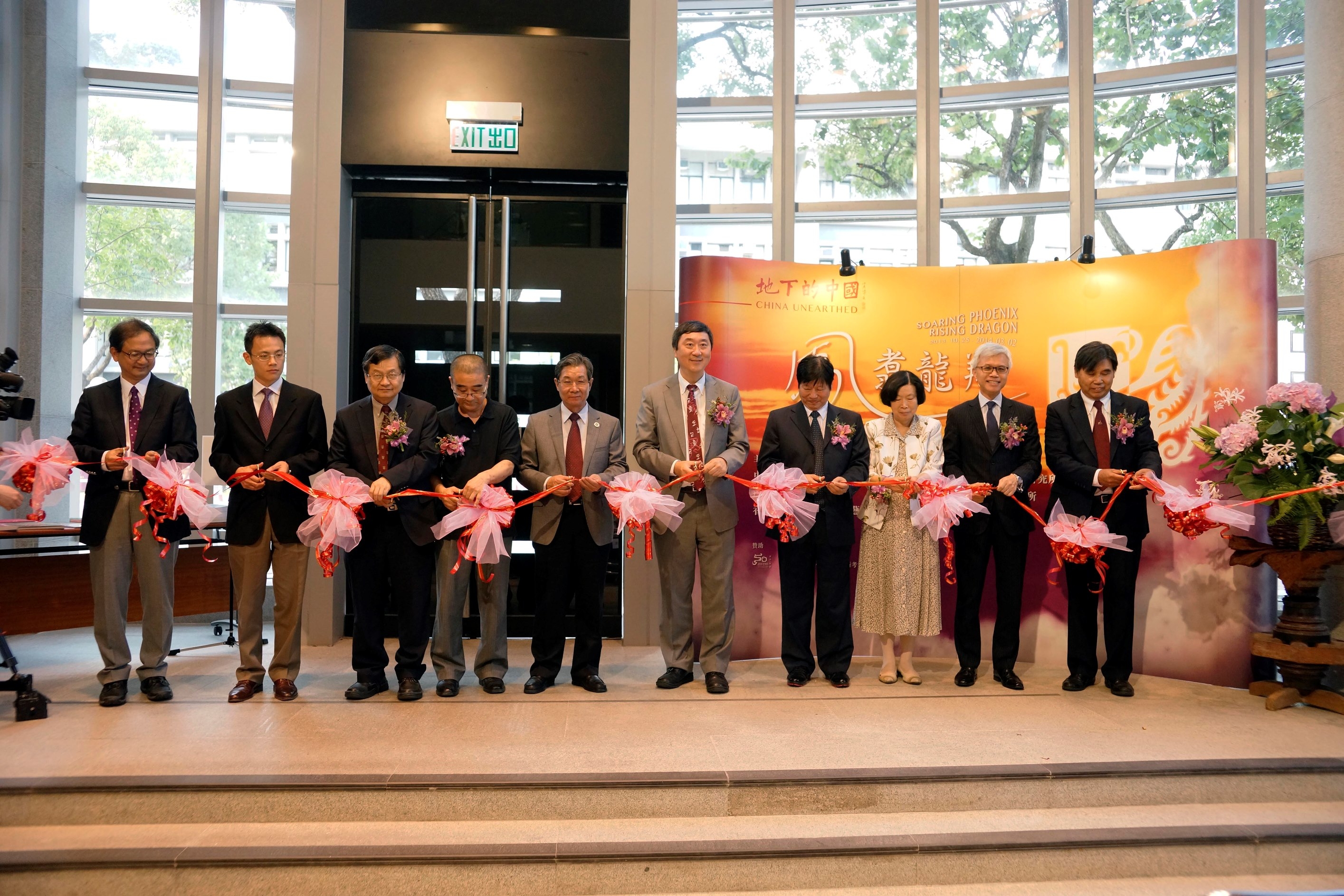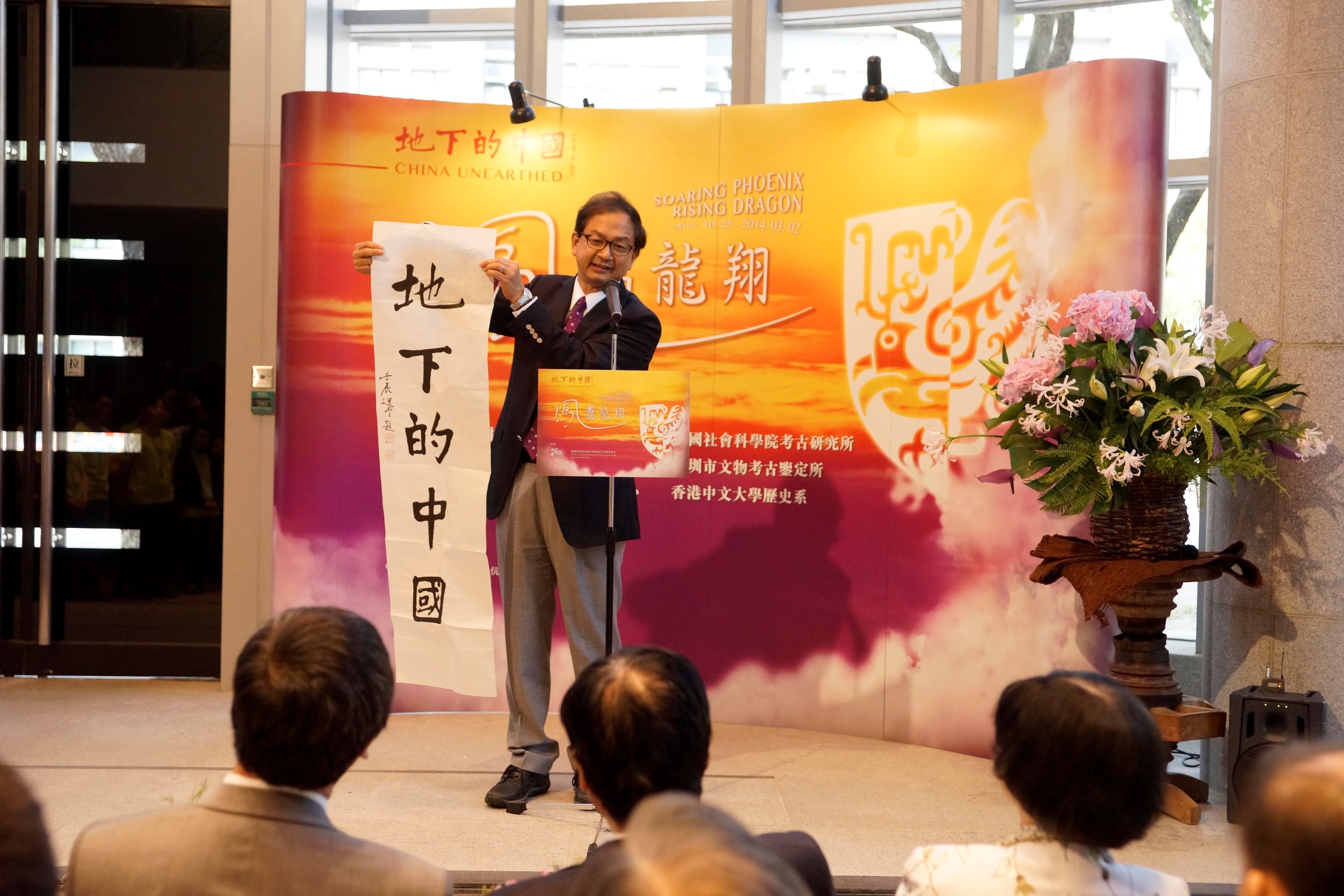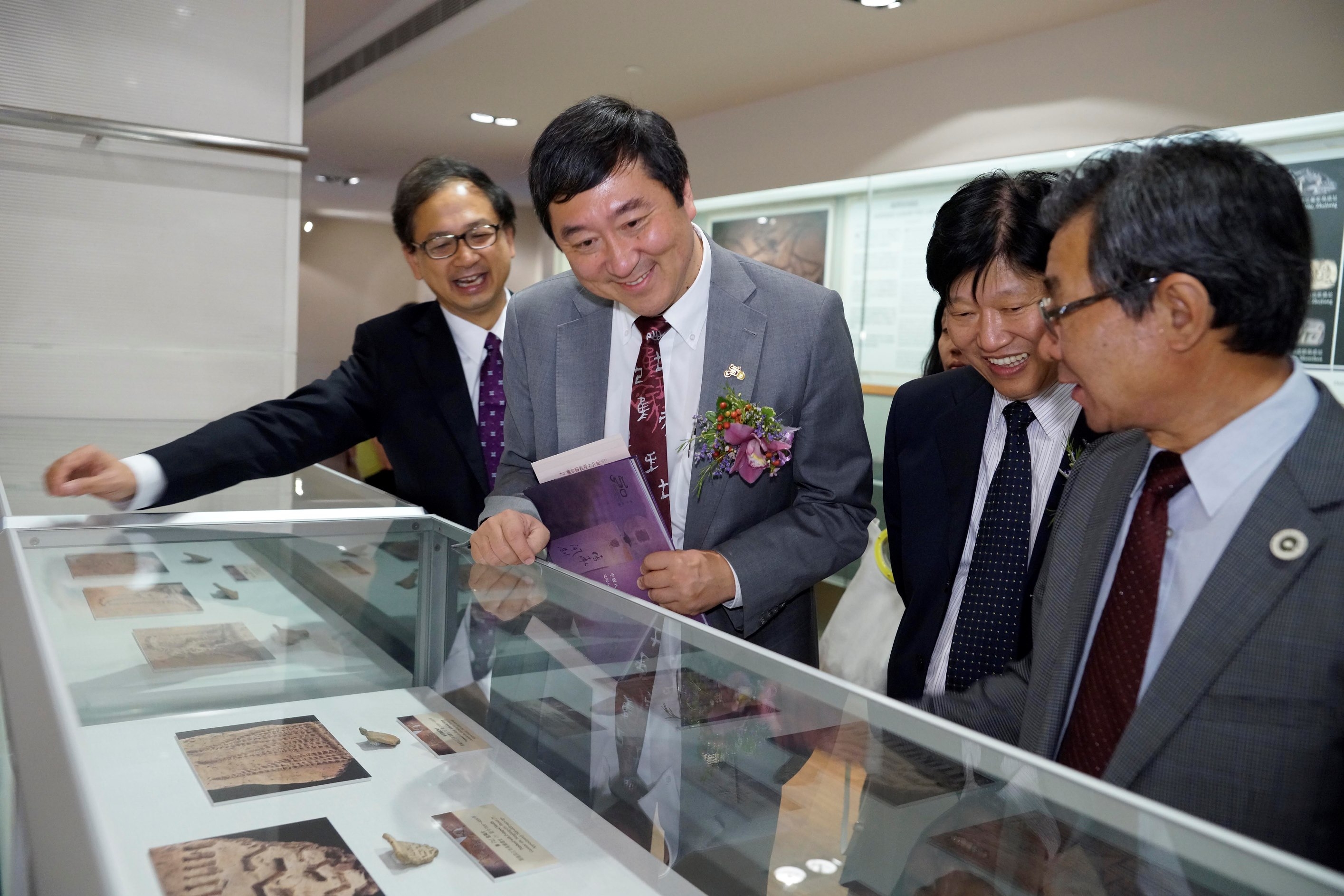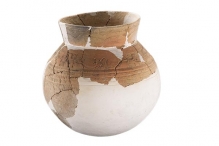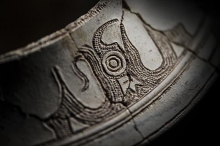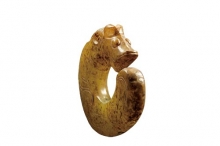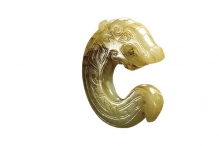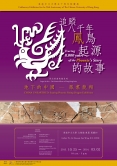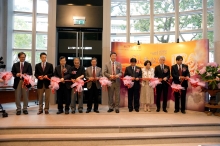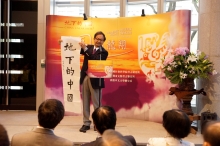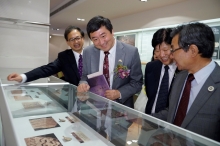CUHK
News Centre
CUHK 50th Anniversary Celebratory Event’CHINA UNEARTHED: Soaring Phoenix, Rising Dragon’ Exhibition Traces 8,000 Years of the Phoenix’s Story
The emblem of The Chinese University of Hong Kong (CUHK) is the Chinese phoenix ‘feng’, which is commonly considered one of the most representative symbols of Chinese culture. There are many classical, historical and mythological studies on this mysterious bird, but none has yet identified its earliest manifestation. To celebrate the Golden Jubilee of CUHK, the Centre for Chinese Archaeology and Art of the Institute of Chinese Studies and the Department of History jointly organize the ‘CHINA UNEARTHED: Soaring Phoenix, Rising Dragon’ exhibition with Art Exhibitions China, Institute of Archaeology of the Chinese Academy of Social Sciences, Hunan Provincial Institute of Cultural Relics and Archaeology and the Shenzhen Municipal Institute of Cultural Relics and Archaeology. The exhibition will be held at the Art Museum of CUHK from tomorrow (25 October) to 2 March 2014.
The opening ceremony of the exhibition was held today (24 October), officiated by Prof. Bai Yunxiang, Deputy Director of the Institute of Archaeology, Chinese Academy of Social Sciences; Mr. He Gang, Researcher of Hunan Provincial Institute of Cultural Relics and Archaeology; Dr. Li Hairong, Deputy Director of Shenzhen Municipal Institute of Cultural Relics and Archaeology; Dr. Louis Ng Chi-wah, Assistant Director of Heritage and Museums, Leisure and Cultural Services Department; Prof. Joseph J. Y. Sung, Vice-Chancellor of CUHK; Prof. Leung Yuen-sang, Dean of Arts, CUHK; Prof. Archie C.C. Lee, Director of Institute of Chinese Studies, CUHK; Prof. Yip Hon-ming, Chair of Department of History, CUHK; Prof. Josh Yiu, Associate Director of the Art Museum, CUHK; and Prof. Tang Chung, Director of Centre for Chinese Archaeology and Art, CUHK.
Origin Story of the Phoenix: An Archaeological Perspective
The exhibition showcases some twenty phoenixes and six dragons artifacts, which are precious omens of good luck from Neolithic and Shang China. Some highlights of this exhibition include rare jade national treasures from the tomb of Fu Hao, who was a Shang dynasty queen. Another is a recently discovered white pottery vessel with phoenix motifs, which has never been displayed in Chinaor overseas. The discovery of the Gaomiao-Xiantouling phoenix cultural circle in South China has reshaped our understanding of ancient East Asian philosophy and ideology. It is an important archaeological breakthrough of the 21st century. The phoenix symbol can now be traced back to Hunan 8,000 years ago. Traces of the phoenix from approximately 7,000 years ago are found in the Pearl River Delta as well.
Last year, the Centre for Chinese Archaeology and Art of CUHK organized the ‘The First Dragon of China’ exhibition. This year, to celebrate CUHK’s Golden Jubilee, the Centre has focused on the story of the phoenix. The exhibition also reflects on the relationships between these two familiar symbols of Chinese culture.
Unearthing Hong Kong: Tracing Our Local Roots
The ‘CHINAUNEARTHED: Soaring Phoenix Rising Dragon’ exhibition is the fourth in the Forget Me Not—The Historical Roots of Hong Kong exhibition series. Hong Kong has over a hundred prehistoric sites. It is brimming with buried stories, and has revealed its history of the phoenix and the dragon as well. On Lamma Island, archaeologists have found phoenix motifs from over 6,000 years ago, and a dragon yazhang—an important ritual object in ancient East Asia—from approximately 3,300 years ago as well. We have such a rich and colorful ancient past. It would be a shame to not make it an integral part of our city’s self-image already.
Past exhibitions of the series have introduced how CUHK’s archaeological research has reconstructed Hong Kong’s ancient past in the context of the greater Asiatic region. In June 2013, CUHK’s Centre for Chinese Archaeology and Art jointly held an international conference on prehistoric rotary machinery with the Civic and Municipal Affairs Bureau of Macau SAR, Institute of Archaeology of the Chinese Academy of Social Sciences, and Jao Tsung-I Petite Ecole of The University of Hong Kong. Its contribution to the history of science and technology in China and its surrounding regions is also introduced at the exhibition. There is plenty of proof that Hong Kong is not a culturally barren place. It is, in fact, a cultural treasure trove.
Members of the public are welcome to visit the CUHK Art Museum to view these exceptional artefacts of great academic and artistic value. Admission is free. The Centre for Chinese Archaeology and Art will also present its full-colour, bilingual exhibition catalogue ‘Soaring Phoenix Rising Dragon’ at the exhibition. The publication is currently available for sale at HK$50. Proceeds will go towards supporting public education of archaeology. Details of the ‘CHINA UNEARTHED: Soaring Phoenix Rising Dragon’ exhibition are as follows:
Date: 25 October 2013 – 2 March 2014
(Closed on 24, 31 December 2013 and public holidays)
Venue: Gallery IV, Art Museum East Wing, Institute of Chinese
Studies, CUHK
Hours: 10:00am – 5:00pm
Enquiries: 3943 7371
Pottery vessel unearthed from Gaomiao. Close-up on impression of a phoenix with opened wings. Circular patterns on its wings symbolize the bird deity carrying the Sun on its wings.
Phoenix motif on white pottery vessel from approximately 7,000 years ago, unearthed at Qianjiaping site, Guiyang County, Hunan, China.
(From left) Prof. Tang Chung, Director of Centre for Chinese Archaeology and Art, CUHK; Prof. Josh Yiu, Associate Director of the Art Museum, CUHK; Prof. Leung Yuen-sang, Dean of Arts, CUHK; Dr. Li Hairong, Deputy Director of Shenzhen Municipal Institute of Cultural Relics and Archaeology; Prof. Bai Yunxiang, Deputy Director of the Institute of Archaeology, Chinese Academy of Social Sciences; Prof. Joseph J. Y. Sung, Vice-Chancellor of CUHK; Mr. He Gang, Researcher of Hunan Provincial Institute of Cultural Relics and Archaeology; Prof. Yip Hon-ming, Chair of Department of History, Dr. Louis Ng Chi-wah, Assistant Director of Heritage and Museums, Leisure and Cultural Services Department; and Prof. Archie C.C. Lee, Director of Institute of Chinese Studies, CUHK; officiate at the opening ceremony of ‘CHINA UNEARTHED: Soaring Phoenix, Rising Dragon’ Exhibition.


